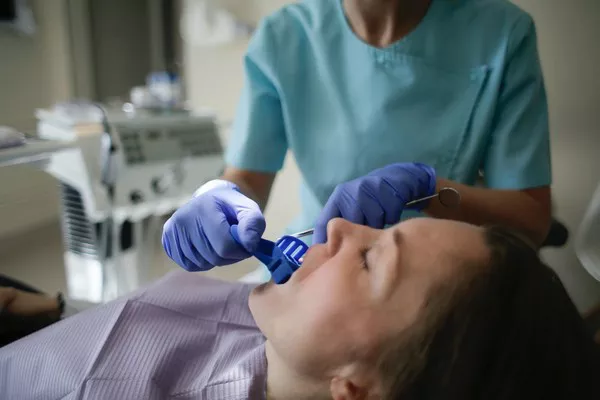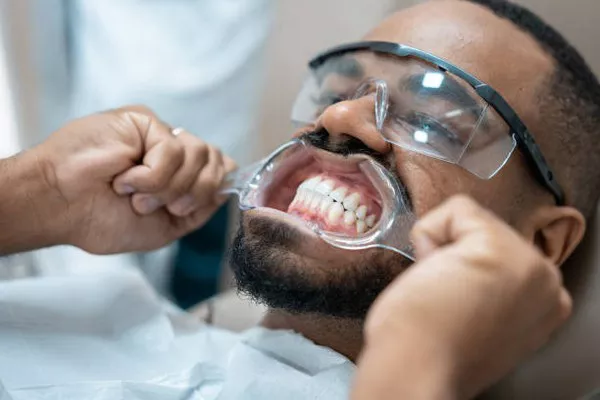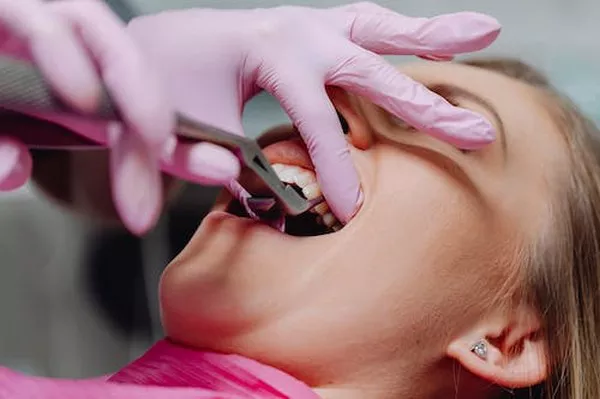Tooth extraction art what are the common complications of tooth extraction operation for life, a lot of people are not strange, because a lot of periodontal disease patients suffering unbearable toothache for a long time, choose tooth extraction operation, which completely eradicated toothache is very helpful for us, but we also need to pay attention to avoid causing complications after tooth extraction, which can bring to our oral secondary damage,
Let’s take a look at the common complications of tooth extraction.
1. Bleeding after tooth extraction will not bleed again after half an hour of compression under normal circumstances.
If there is still bleeding after spitting out sterile gauze and cotton rolls, or bleeding again on the second day after tooth extraction, it is bleeding after tooth extraction. Bleeding did not stop at that time after tooth extraction is primary bleeding, and bleeding due to other reasons on the second day after tooth extraction is secondary bleeding.
There are both systemic and local causes of bleeding.
Systemic causes include various blood diseases, hypertension, hepatobiliary diseases and so on.
Local causes are gum tear, alveolar bone fracture, granulation tissue or foreign body in alveolar fossa, blood clot detachment or secondary infection, etc.
Prevention and treatment: preoperative detailed medical history, patients with systemic diseases should consult the relevant department of physicians, if necessary, transfer to the department for treatment.
Tooth extraction should be done carefully to minimize trauma.
Tooth extraction trauma should be seriously dealt with, and the patients and their families should be carefully explained the matters needing attention after tooth extraction.
For patients with severe tooth extraction trauma and bleeding tendency, they can leave after biting gauze and cotton rolls for half an hour after tooth extraction and no abnormality can be detected.
When bleeding occurs after extraction, local examination should be performed first.
It is common to see a clot elevated above the alveolar fossa, with blood oozing from below the clot.
The treatment method is: first remove the clot higher than the alveolar fossa, check the bleeding site, rinse with normal saline, local and external use of hemostatic, again compression hemostasis.
If there are foreign bodies in the alveolar fossa, the alveolar fossa can be scratched and scraped thoroughly under local anesthesia, so that the alveolar fossa is filled with fresh blood, and then pressure to stop bleeding.
If bleeding is obvious, the alveolar fossa can be filled with gelatin sponge or iodoform gauze, and then the wound is closed and sutured.
After local treatment, patients related to systemic factors need to undergo laboratory tests and symptomatic treatment, such as blood transfusion or transfusion of coagulation factors.
2. Tooth extraction infection generally does not occur after tooth extraction, but complicated tooth extraction and impacted tooth extraction are prone to occur. Tooth extraction infection can be divided into acute infection, dry groove disease and chronic infection.
1. Acute infection is related to local trauma of tooth extraction, local infection before tooth extraction, and diabetes.
Local or facial pain, swelling, and limited mouth opening occur 2 days after extraction.
In cases of impacted teeth, flap removal or severe trauma, significant cheek swelling and painful reactions may occur within 12 to 24 hours after surgery, but gradually subside after 3 to 5 days and are not considered acute infections.
Prevention and treatment: insist on aseptic operation during tooth extraction to minimize surgical trauma.
Local infection is strictly prohibited after tooth extraction scratch scratch, lest cause infection spread.
Diabetic patients in the condition of control under the premise of tooth extraction.
Antibiotics were given before and after surgery.
2. Dry groove syndrome Dry groove syndrome is another type of acute infection caused by tooth extraction, which is more common in the posterior mandibular teeth, especially after the extraction of the third impacted mandibular molar.
Under normal circumstances, the pain in the wound will gradually disappear after two to three days, even with the flap removal and tooth extraction.
If severe pain occurs two to three days after tooth extraction and radiates to the ear and temporal region, the lower jaw area or the top of the head, and cannot be relieved with general analgesics, dry groove may occur.
Clinical examination showed that the alveolar fossa was empty, or there were corrupt and degenerative blood clots, which were grayish white.
The necrotic material covering the wall of the alveolar fossa has a foul odor. The bone surface can be directly touched by the probe and there is sharp pain.
There was no obvious swelling of the maxillofacial region, no obvious limitation of mouth opening, and lymph node enlargement and tenderness under the jaw.
Histopathologic findings are superficial osteitis or mild localized osteomyelitis of the alveolar bone wall.
Prevention and treatment: Dry trough is related to surgical trauma and bacterial infection.
Therefore, aseptic operation should be strictly observed during the operation to reduce surgical trauma.
Once dry groove occurs, the principle of treatment is thorough debridement and isolation of external stimulation of the alveolar socket to promote the growth of granulation tissue.
The treatment method is to clean the alveolar fossa with 3% hydrogen peroxide solution under block anesthesia, and wipe the alveolar fossa repeatedly with a small cotton ball to remove corrupt and necrotic substances until the alveolar fossa is clean and odorless.
Then, it was rinsed repeatedly with hydrogen peroxide solution and normal saline, and iodoform gauze was placed in the alveolar socket.
To prevent the iodoform yarn from falling off, the gingiva can also be fixed with a stitch.
Generally, the healing process is 1-2 weeks, and the iodoform yarn can be taken out after 8 to 10 days. At this time, the bone wall of the alveolar fossus has been covered with a layer of granulation tissue, and can gradually heal.
3. Chronic infection is mainly caused by local factors, such as residual roots, granulation tissue, calculus, broken teeth or broken bone and other foreign bodies left in the alveolar fossa.
The clinical manifestations were prolonged unhealing of the extraction wound, leaving a small wound, red and swollen gingival tissue around the wound, a small amount of pus discharge or granulation tissue hyperplasia, and generally no obvious pain.
Prevention and treatment: the alveolar socket should be carefully cleaned after tooth extraction, especially for the affected teeth with chronic periapical inflammation. If the inflammatory lesions of the root tip are not scraped clean, bleeding after tooth extraction can occur, and chronic inflammation can also be formed and not healed for a long time.
The residual roots should be prevented when multiple teeth are extracted.
If chronic infection occurs, X-ray film should be taken to understand the lesions in the alveolar fossa, whether there is any foreign body left, the healing of the alveolar fossa, and then under local anesthesia, the scraping of the alveolar fossa should be carried out again, and the blood should be filled with sterilized gauze and cotton rolls to stop bleeding, and oral antibiotic treatment should be given.






























